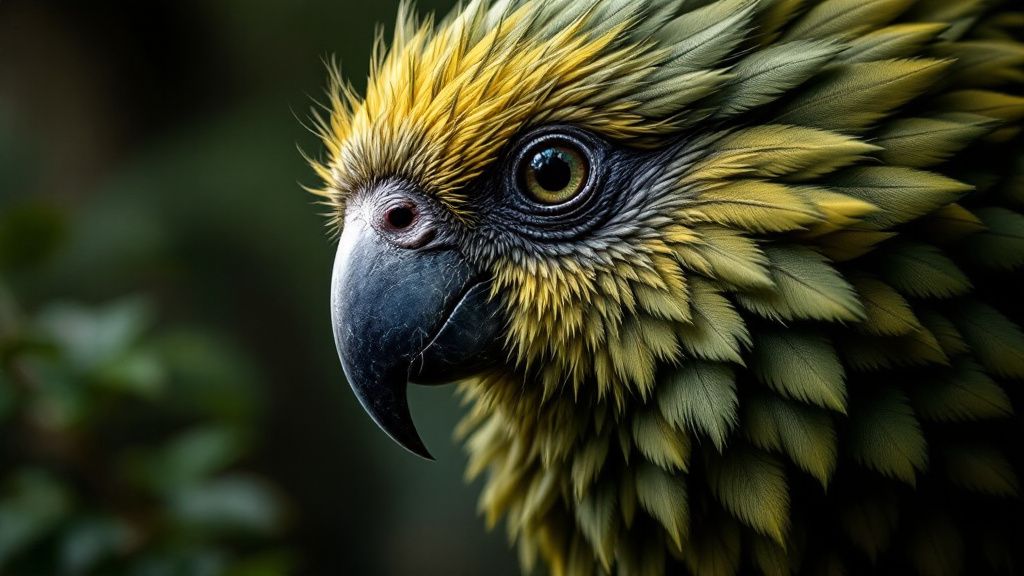
In the heart of New Zealand's verdant forests, the kakapo parrot, scientifically known as Strigops habroptilus, captivates the imagination with its unique blend of traits seldom seen in the avian world. This nocturnal creature reveals itself under the moonlit canopy, adorned with a striking green and yellow plumage that melds seamlessly with the foliage around it, serving as a natural camouflage against potential threats.
The kakapo is renowned for its title as the world's heaviest parrot, with adults tipping the scales between 1.5 to 4 kilograms. Despite its hefty stature, it thrives on muscle and agility rather than flight. Its powerful legs and feet are evolutionary marvels, allowing it to masterfully climb and navigate the rugged terrains of its forested habitat. The kakapo’s herbivorous diet, rich with fruits, seeds, flowers, and leaves, further supports its adaptation to a grounded life, where nature furnishes it with an abundant buffet of plant life.
A jewel in the exotic pets catalog purely in terms of curiosity, the kakapo’s most enigmatic feature lies in its lek mating system. During the breeding season, males congregate in specific regions, calling out to allure selective females. This unusual animal behavior is both a serenade and a testament to the kakapo’s intriguing courtship rituals, reflecting an evolution distinct from typical animal kingdom practices.
With lifespans extending beyond 60 years, these parrots rank among the longest-living bird species, their longevity paralleling the patience of conservationists striving for their survival. The story of the kakapo is one of poignant conservation triumphs. Once dwindling to a dire population of about 50 in the 1990s, the relentless dedication of animal rights organizations has seen numbers swell to approximately 252 by 2022. The kakapo today stands as a beacon in the chronicles of animal conservation, highlighting the delicate dance between survival and extinction.
The kakapo’s existence enlightens us on the intricate beauty and challenges of unique wildlife. Its journey, echoing with tales of recovery and resilience, emboldens the relevance of protecting endangered species worldwide. As you discover the kakapo, you embark on a narrative of preservation, advocating for the harmonious coexistence and protection of rare animals teetering on the brink of oblivion.
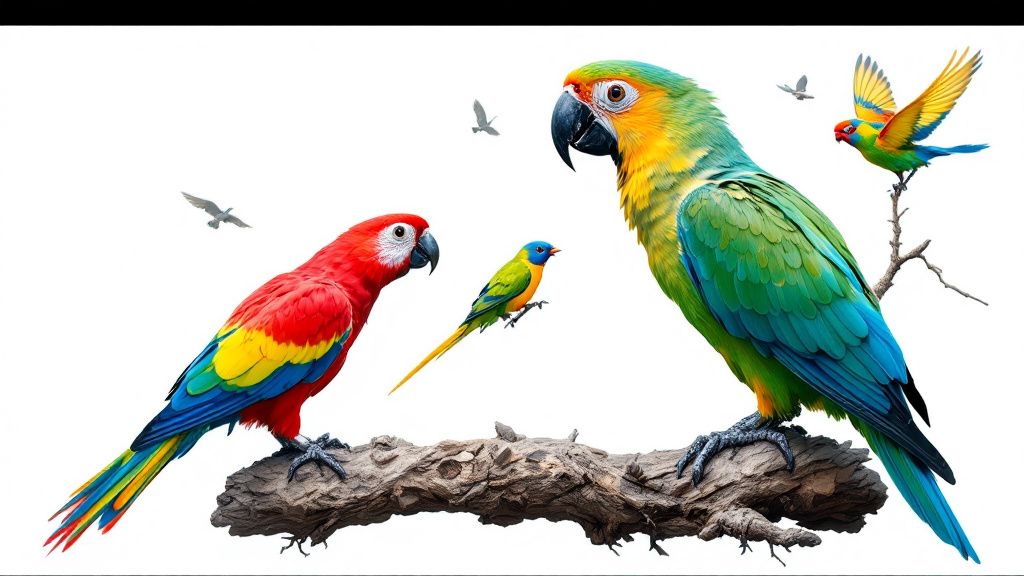
The evolutionary journey of the world's rare animals, particularly those in New Zealand, like the kakapo, unveils a vibrant tapestry of unique adaptations and survival stories. Exploring the kakapo, often referred to as the owl parrot, reveals an evolutionary path carved approximately 80 million years ago. This timeline coincides with New Zealand’s separation from other landmasses, forming an isolated sanctuary where these extraordinary creatures developed without external pressures, resulting in some of the most unusual animals on Earth.
The kakapo, a member of the family Strigopidae, shares genetic ties with other fascinating New Zealand parrots, such as the kea and kaka. Each of these creatures embodies specific evolutionary characteristics that allow them to thrive in distinct ecological niches. This adaptation is not just a testament to survival but also a reflection of their unique environments. While the kea navigates alpine regions and the kaka inhabits forest floors, the kakapo settled into its nocturnal lifestyle amidst the dense New Zealand forests, evolving features that include an acute sense of smell and soundless plumage perfect for stealthy movement during nighttime forays.
The kakapo's survival tale is deeply interwoven with New Zealand's broader ecosystem, home to a variety of endemic species, such as the kiwi and the tuatara. These creatures, like the kakapo, evolved in magnificent isolation, giving rise to a plethora of adaptations tailored to the specific challenges of their habitats. This biodiversity hotspot showcases the distinctive paths taken through evolution, presenting a menagerie of nature's most creative designs.
Analyzing fossil records and ancient habitats offers insight into how these unique animal adaptations have shaped their survival strategies. For the kakapo, adaptations like a strict herbivorous diet composed primarily of native fruits, seeds, and flowers, and their unusual booming mating ritual, are pivotal for sustaining their place in the natural world. These features illustrate how the forces of evolution sculpted a creature that defies conventional norms.
The kakapo’s evolutionary saga, complemented by its current status as a critically endangered species, calls for an emphasis on conservation efforts, such as breeding programs that have ushered their population from crisis to cautious recovery. Understanding these evolutionary roots connects us intimately to the legacy and future of these uncommon pets, igniting the passion to preserve their stories for generations to come.
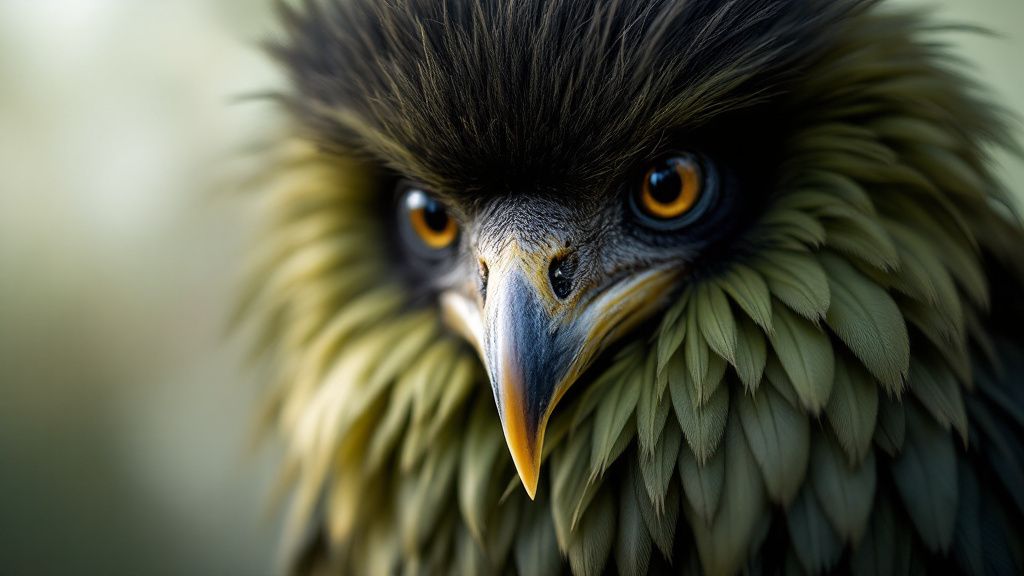
The kakapo, native to New Zealand, epitomizes the urgent conservation challenges faced by many endangered species. With only around 250 individuals alive in 2023, the survival of this peculiar parrot depends on overcoming significant hurdles, driven largely by habitat destruction and threats from invasive species. These challenges necessitate robust and innovative solutions to ensure the kakapo’s continued existence.
One of the primary obstacles is the kakapo's inherently low reproductive rate. Females breed infrequently, typically only every two to four years, which inherently slows population growth. This slow breeding cycle, combined with the perils of habitat loss, magnifies the difficulties of conservationists tasked with stabilizing and increasing their numbers.
The degradation of the kakapo's natural habitat is closely linked to human activity and the introduction of invasive predators such as rats, cats, and stoats. These predators have been devastating to the kakapo populations, particularly on offshore islands where these parrots live. The presence of such predators necessitates the implementation of predator-free sanctuaries where kakapos can thrive without the constant threat of being hunted.
To combat these threats, intensive management and conservation strategies have been developed. One of the key strategies has been the translocation of kakapos to predator-free islands, creating safe havens where they can live and reproduce without the threat of predators. Additionally, contemporary technology, such as GPS tracking, plays a crucial role in monitoring their movements and breeding activities, providing vital data that informs conservation strategies.
The success of the kakapo recovery program, which has raised numbers from a perilous count of 50 individuals in 1995, underscores the importance of continued funding and global support for endangered species recovery. The collaborative efforts of conservationists, researchers, and the public are essential to maintaining momentum in the battle against extinction. By fostering habitat protection, supporting breeding programs, and promoting awareness, you help secure a future where the kakapo and other rare animals can flourish. Through these collective endeavors, the legacy of these unique creatures continues, offering hope and inspiration for future generations.
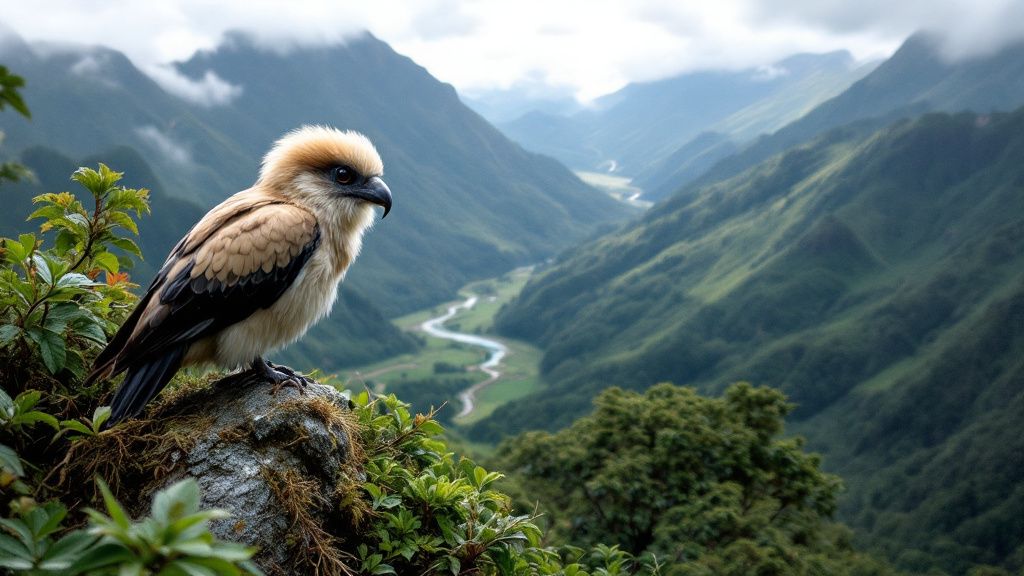
In the realm of animal conservation, a remarkable transformation is underway, driven by an upswing in global initiatives aimed at protecting rare and unusual animal species like the kakapo. These flightless parrots, native solely to New Zealand, provide a promising example of how dedicated conservation strategies can effect positive change. Their numbers have rebounded from a precarious 50 individuals in the 1990s to around 252 by October 2023, underscoring the effectiveness of intensive conservation programs.
Central to this success are the comprehensive efforts by the New Zealand Department of Conservation and wildlife organizations, who have implemented multi-faceted initiatives such as breeding programs, habitat restoration, and predator control. These efforts form a blueprint for conservation that integrates traditional methods with cutting-edge technology. For instance, the use of GPS tracking and artificial intelligence allows for meticulous monitoring of kakapo populations, ensuring their specific breeding and habitat needs are met with unprecedented precision.
New Zealand's conservation trends are not solely focused on the kakapo. Similar strategies are in place for safeguarding other endemic species like the kiwi and the tuatara, each of which faces its own set of challenges. By emphasizing habitat restoration and managing invasive species, these efforts collectively enhance the resilience of New Zealand’s unique ecosystems, creating supportive environments where diverse species can thrive together.
Moreover, a significant trend in modern conservation is the integration of community involvement and citizen science initiatives. These grassroots movements have become pivotal, mobilizing volunteers to engage in habitat restoration and species monitoring. By empowering local communities and leveraging public participation, conservation programs gain valuable manpower and foster a deeper collective responsibility for protecting unique wildlife.
Ultimately, these shifting flyways in conservation highlight a forward-thinking approach that combines rigorous scientific methods with community collaboration. As global consciousness around the importance of biodiversity grows, so too does the optimism that these concerted efforts can secure a sustainable future for the world's most peculiar and cherished animals.
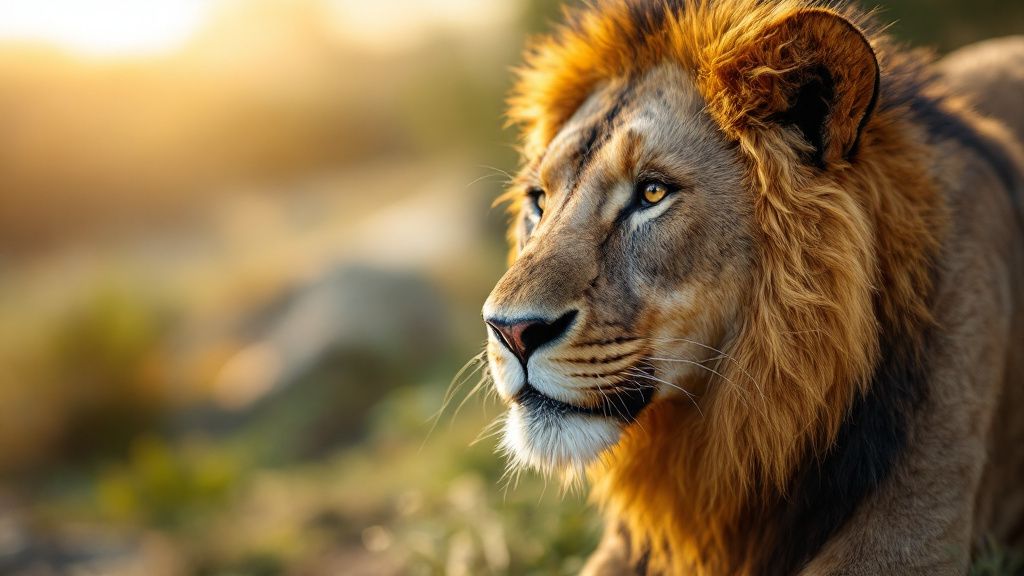
The resurgence of various unique wildlife species around the globe marks a triumph in conservation, showcasing what is possible when targeted efforts meet dedicated intervention. The story of the kakapo is emblematic of this success, with populations rising from dire lows to over 250 individuals, thanks to concerted breeding programs and habitat restoration. When paired with global success stories, these achievements echo the impactful results of comprehensive conservation strategies.
The soaring numbers of the California condor, once teetering at just 27 individuals in the 1980s, now reaching over 500 by 2022, highlights the effectiveness of intensive breeding programs and habitat protection. These efforts ensured the rebirth of a species once nearly lost, setting a precedent for conservationists worldwide.
Similarly, in the United States, the reintroduction of the grey wolf to Yellowstone National Park serves as a transformative example of how returning predators to their natural environments can restore ecological balance. Since their reintroduction in 1995, the presence of wolves has led to healthier elk populations and rehabilitated vegetation, underscoring the vital role that keystone species play in maintaining biodiversity.
In China, diligent conservation for the giant panda has transitioned the species from 'endangered' to 'vulnerable,' thanks to the establishment of over 67 panda reserves and efforts to preserve their natural habitats. This shift, accompanied by the population growth to over 1,800 individuals, demonstrates the fruits of integrating habitat preservation with species-specific protections.
The tale of the Arabian oryx reflects the potential of captive breeding and restoration programs, as a species once extinct in the wild now boasts over 1,000 individuals in its native deserts. This recovery owes much to strict breeding initiatives and the reintroduction into safe habitats in areas like Oman and the UAE.
The conservation success of humpback whales also underscores the strength of global cooperation, with populations rebounding from about 10,000 in the 1960s to over 80,000 by 2021. International bans on whaling and the establishment of marine protected areas have facilitated this remarkable recovery, highlighting the effectiveness of coordinated international efforts.
These global success stories in animal conservation provide invaluable insights into the strategies necessary for sustaining biodiversity. By examining these triumphs, efforts to preserve rare and unusual animal behavior can draw from a wellspring of successful techniques and collaborative ventures, ensuring that future interventions are equally impactful.

Engaging with the data concerning rare animals like the kakapo reveals the profound impact that targeted conservation strategies can have on species survival. As of 2023, the kakapo population has impressively increased to approximately 252 individuals, up from just 50 in the 1990s. This resurgence is a direct result of dedicated and strategic efforts by animal rights organizations and conservationists.
Key to this population growth is a multifaceted approach that blends habitat restoration, predator control, and the creation of breeding environments on predator-free islands. These safe sanctuaries shield kakapos from the invasive species that once threatened their very existence, allowing them to thrive in more controlled and secure settings.
The kakapo is distinctly classified as Critically Endangered, largely due to its unique life characteristics, including a lek mating system where males exhibit displays to attract females. These behaviors add layers of complexity to conservation efforts but also provide rich data for understanding species-specific needs and challenges.
The Kakapo Recovery Program, initiated in the 1990s, has been at the forefront of these successful efforts. It employs innovative techniques such as artificial insemination and supplementary feeding to boost reproductive outcomes. These initiatives address the inherent reproductive hurdles and ensure that each generation of kakapos can contribute to a sustainable population growth.
Ongoing monitoring and research remain imperative, with a keen focus on genetics, health, and reproductive success. This continuous data collection and analysis enhance understanding and inform future conservation strategies, ensuring that efforts remain adaptive and effective.
By examining the story of the kakapo, you gain valuable statistical insights into the power of human intervention in wildlife preservation, highlighting that carefully crafted strategies rooted in data and research can result in significant strides in fostering our natural world. These insights reveal the critical importance of sustained efforts and innovation in the realm of animal conservation.

Envisioning the future of animal conservation brings a wave of optimism, especially for rare animals like the critically endangered kakapo. This unique parrot species, native to New Zealand, has shown remarkable population growth due to impactful conservation measures, with numbers increasing to around 252 individuals in 2023 from just 50 in the mid-1990s. Such trends highlight the potential for continued success in the coming years.
Future scenarios for the kakapo heavily depend on maintaining rigorous conservation management. This includes sustaining efforts in habitat restoration and predator control, which have been critical in enhancing the kakapo's breeding success. With these foundational strategies in place, the long-term health and viability of the kakapo population can be bolstered, driven by proactive management.
Genetic management remains a cornerstone of the Kakapo Recovery Program. Ensuring genetic diversity is essential to avoid inbreeding risks, which the small population size naturally poses. By carefully managing genetics, conservationists aim to secure a gene pool that supports robust health and resilience among kakapo individuals, paving the way for a sustainable future.
Predictions from current conservation strategies are promising; they suggest that if these efforts continue effectively, the kakapo population could reach a target of 500 individuals by 2030. Achieving this milestone would signal a shift toward a more stable and thriving population, reducing the species' vulnerability and enhancing its chances for long-term survival.
Technology promises to play an increasingly pivotal role in conservation efforts. The integration of advanced tools such as tracking devices and artificial intelligence for monitoring can significantly improve the precision and efficiency of conservation programs. For the kakapo and other endangered species, these technological advancements could lead to more successful outcomes, enabling faster and more informed responses to their needs.
The anticipated future of conservation holds the promise of unprecedented protection for the world’s rare animals. With continued commitment and innovation, conservationists and wildlife organizations can create a hopeful outlook for the planet’s biodiversity, ensuring that unique animal species like the kakapo have enduring roles in the world's ecological tapestry.
Get free resources, early access to new features and updates.
No spam. Just fun educational emails!